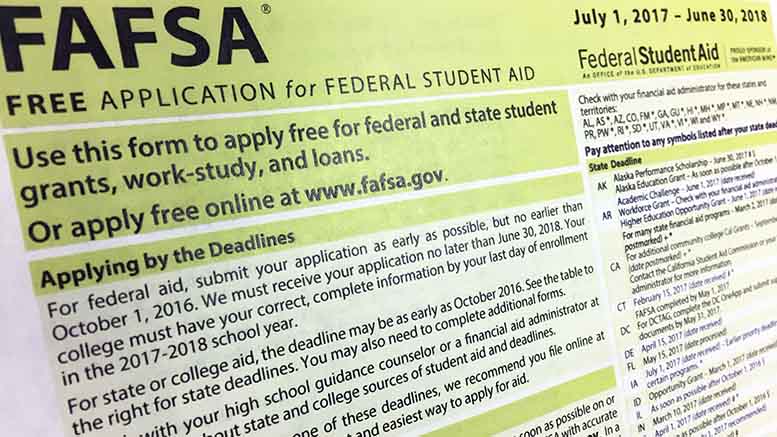Each year, millions of students — including many intending to attend community colleges — begin the process of completing the Free Application for Federal Student Aid (FAFSA), but a significant percentage of these never complete the form for a number of reasons.
For some applicants, the process is stymied due to administrative issues. Completing the FAFSA is complicated, but so is verifying that the information provided is accurate.
Students offer a myriad of reasons for either not initiating or not completing the aid application process. Some mistakenly believe that they wouldn’t qualify for aid or that the FAFSA was only for loans. Others report having difficulty completing the forms or are unaware of the aid available.
As a result, community college leaders continue to call for greater simplification of the FAFSA and streamlining of the process.
What about verification?
Prior to the 2012-13 award year, financial aid administrators had to verify a standard set of data for at least 30 percent of their FAFSAs. In recent years, the U.S. Department of Education (ED) transitioned to a verification selection algorithm that uses a risk model to identify FAFSA data elements that may be prone to error. Colleges must then verify any flagged items, and students must provide documentation to receive a federal grant or loan. The set of data elements subject to verification changes annually.
Community college students often find the process daunting. Not only is it challenging to complete the FAFSA and document students’ financial status, but the verification process can take weeks or even months, leaving students without the means to pay college costs. The process also takes an enormous amount of financial aid administrators’ time – time that they could be spending counseling students.
In testimony before the Senate Health, Education, Labor and Pensions (HELP) Committee last fall, Nancy McCallin, president of the Colorado Community College System, reported that of those FAFSAs selected for verification, only 45 percent completed the process. Others have expressed similar concerns about the number of students who never complete the process.
Improvements in the process
Efforts to simplify the FAFSA process and reduce the burden of verifying data continue. HELP Committee chair Sen. Lamar Alexander (R-Tennessee) favors greatly reducing the number of questions on the FAFSA and relying more on data already collected by other federal agencies. Use of the Internal Revenue Service Data Retrieval Tool enables more FAFSA applicants to automatically import tax data directly and use of the “prior-prior year” income information allows more students to apply earlier for financial aid.
More can be done and should be done to eliminate the hurdles for low-income students to secure the financial aid that they need. This remains a key goal for community college leaders.




